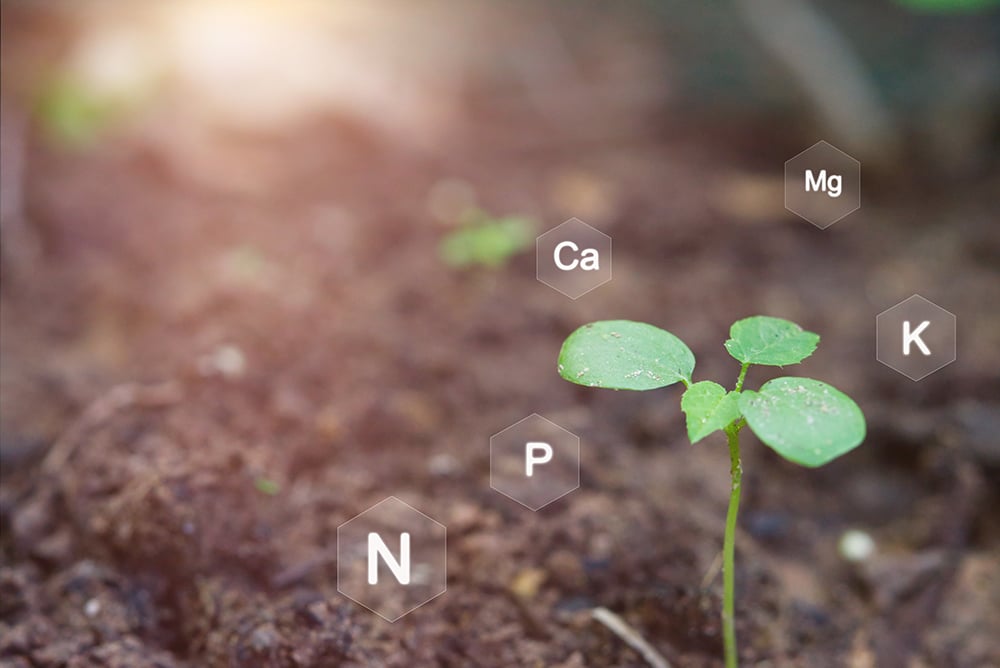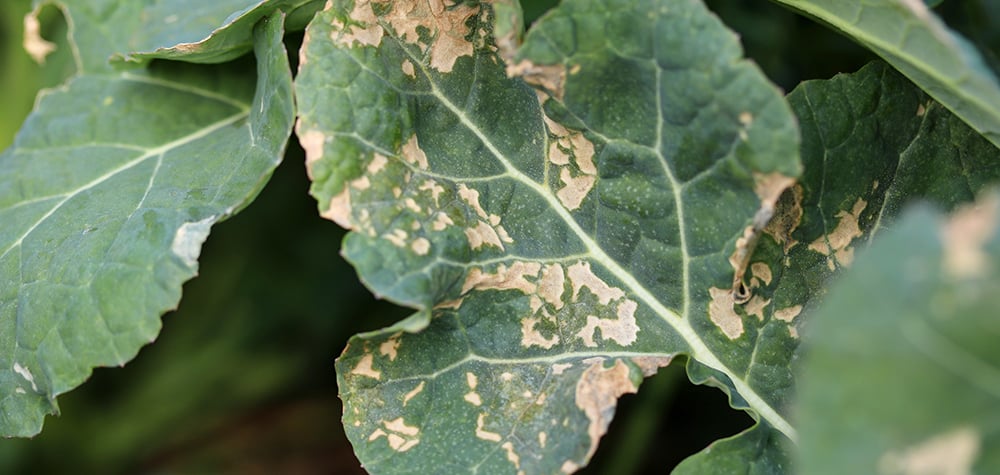

Best pH Probes For Hydroponics in 2025 – A Complete Buying Guide
Finding the best pH probe for hydroponics can make or break your growing success. In hydroponics, maintaining the correct pH is essential because it directly
# Type at least 1 character to search # Hit enter to search or ESC to close

No products in the cart.

No products in the cart.
Product Categories

Electrical conductivity (EC) does not directly affect plant growth but indirectly indicates nutrient availability and salinity levels in the growing medium. Low EC levels typically indicate a low nutrient concentration which causes nutrient deficiencies and slowed growth rates. So, generally, higher EC levels mean more nutrients for plants, but very high EC levels can cause plant burn or kill the plant. Therefore, measuring EC in the soil, water, or other growing medium is essential.
When it comes to understanding soil health and optimizing plant growth, one crucial factor to consider is the electrical conductivity of the soil. Electrical conductivity is a measure of the soil’s ability to conduct an electrical current, which is directly related to the concentration of soluble salts and nutrients in the soil.
Electrical conductivity plays a vital role in plant growth and development, as it serves as an indicator of the availability of essential nutrients in the soil, as well as the overall fertility of the soil.
The electrical conductivity of soil is influenced by the concentration of cations (positively charged ions) and anions (negatively charged ions) present in the soil solution. These ions, which include calcium, magnesium, potassium, sodium, and various other nutrients, contribute to the overall EC value of the soil.

Plants rely on these essential nutrients for their growth and metabolic processes. When the electrical conductivity of the soil is within an optimal range, it indicates that the soil contains adequate levels of nutrients required for plant growth. However, when the EC value deviates from the optimal range, it can have adverse effects on plant health and productivity.
Electrical conductivity is closely linked to nutrient availability in the soil. For example, the higher the EC value, the more negatively charged sites there are in the soil, which can hold onto positively charged nutrients (ions). This means that soils with higher EC values generally have a greater capacity to retain and supply essential nutrients to plants, while soils with low EC values may indicate a deficiency of available nutrients, which can negatively impact plant growth.

It is important to note that while electrical conductivity provides insights into nutrient availability, it does not directly measure the concentration of specific nutrients in the soil.
To put it into perspective, let’s take a look at a hydroponic production system from Shanghai, China. A study was conducted in a hydroponic greenhouse to look into the effects that EC values (EC value of 0 to 9.6) had on the growth of pakchoi cultivation.
The study revealed that at very high (EC value: 9.6) or very low EC values (EC value: <0.6) the pakchoi had a significant reduction in both the fresh and dry weight, the leaf size, water content in the leaf, leaf net photosynthetic rate, transpiration rate, stomatal conductance, and also the taste score.
When the EC value was increased between 1.8 and 2.4, the nitrite content and enzyme activities remained low, but they rapidly increased at very high EC levels.
Additionally, when they increased from a low EC to a high EC they saw a gradual increase in the leaf relative chlorophyll, nitrate contents, and ascorbic acid, whereas the soluble sugar content of the pakchoi decreased.
They concluded that the optimal EC value for pakchoi plant growth would, therefore, be between 1.8 and 2.4 in a hydroponic system. They also added that exposing plants like pakchoi to extremely high or low EC environments, the plant would induce nutrient stress, enhance the pakchoi’s antioxidant enzyme activities, and therefore suppress its overall quality and growth.
One of the key factors influencing electrical conductivity in soil is salinity. Soil salinity refers to the presence of excessive salts in the soil, which can disrupt plant growth and productivity. Salinity can occur naturally in arid and semi-arid regions or as a result of human activities such as improper irrigation practices and excessive use of fertilizers.

High electrical conductivity values are often indicative of saline soils, where the salt concentration is above the threshold level for optimal plant growth. Saline soils can hinder water uptake by plants, leading to water stress and reduced nutrient absorption. Additionally, high salt concentrations can cause ion imbalances and toxicity, negatively affecting plant metabolism and overall health.
On the other hand, low electrical conductivity values in soil typically indicate non-saline soils, where the salt concentration is within acceptable limits for plant growth. However, it is important to note that even non-saline soils can have low EC values if there is a deficiency of nutrients or organic matter.
Several factors influence the electrical conductivity of the soil including soil texture, soil moisture, soil organic matter, and soil pH.
Soil texture refers to the amount of sand, silt, and/or clay in the soil. Sandy soils have larger particles and larger pore spaces and generally have lower electrical conductivity values. This is because sandy soils have a lower capacity to retain cations and nutrients, leading to lower EC values.
In contrast, clay-based soils, which have smaller particles and smaller pore spaces, tend to have higher electrical conductivity values. Clay particles have a higher surface area and can hold onto more cations, resulting in higher EC values. Silt soils fall somewhere in between sandy and clayey soils in terms of electrical conductivity.
Soil moisture content plays a significant role in determining electrical conductivity. The more moisture there is in the soil, the higher the EC reading will be. This is because water itself is a good electrical conductor, and the presence of more water in the soil increases the number of ions in the solution, thereby increasing the electrical conductivity.

It is important to note that soil moisture levels can fluctuate, and EC readings may vary accordingly. Therefore, it is advisable to take EC measurements under consistent soil moisture conditions to obtain accurate and comparable results.
Organic matter content in the soil can influence electrical conductivity. Organic matter, such as decomposed plant material and fungus, contributes to the overall cation exchange capacity (CEC) of the soil. CEC refers to the soil’s ability to retain and exchange cations, including essential nutrients.
Soils with higher organic matter content generally exhibit higher electrical conductivity values. This is because organic matter provides more negatively charged sites for cation exchange, resulting in increased EC values. Furthermore, organic matter enhances soil structure, water-holding capacity, and nutrient availability, all of which contribute to improved plant growth.
Soil pH, which measures the acidity or alkalinity of the soil, can influence electrical conductivity. Extreme pH levels, either highly acidic or highly alkaline, can affect the ionization of salts and, consequently, the electrical conductivity of the soil solution.
Acidic soils with low pH values may have higher EC values due to the presence of aluminum and iron ions, which contribute to increased electrical conductivity. Alkaline soils, on the other hand, may have lower EC values due to the precipitation of salts and reduced ionization.
It is important to maintain a balanced pH level in the soil, ideally within the range suitable for the specific crops being grown, to optimize nutrient availability and minimize adverse effects on plant growth.
Accurate measurement of soil electrical conductivity is essential for understanding soil fertility, salinity levels, and nutrient availability. Several methods can be used to measure EC in soil.
Handheld EC meters are portable devices that provide a quick and convenient way to measure electrical conductivity in the field. These meters typically consist of a probe. The probe is inserted into the soil and the EC measurement is displayed on a screen.
Handheld EC meters are user-friendly and offer real-time measurements, allowing farmers to monitor and adjust soil conditions as needed.

For more precise and comprehensive measurements, you can send your soil sample to a laboratory for conductivity analysis. In the laboratory, EC is measured using sophisticated conductivity meters. This method will give you very accurate results and allow for additional soil testing, such as nutrient analysis and pH determination. However, laboratory analysis is often expensive and it can be time-consuming.
These are paper strips that can be dipped into a soil sample to obtain a semi-quantitative estimation of electrical conductivity. The color change on the strip corresponds to the EC value of the soil. The strip color is then compared with a color chart. While this method is relatively simple and cost-effective, it may not provide precise measurements and is best suited for quick assessments.
Electrical resistivity imaging, or ERI, is a geophysical method that measures the electrical resistivity of soil with electrodes. The EC value of the soil is estimated from the resistivity.
ERI is a non-destructive and non-invasive technique that provides valuable information about soil variability and can be used for mapping EC values across a field or specific area.
Soil moisture sensors are often used in precision agriculture, and can also provide indirect measurements of electrical conductivity.

These sensors use various technologies, such as capacitance or impedance, to measure soil moisture content. Since soil moisture levels influence EC readings, continuous monitoring of soil moisture can offer insights into changes in electrical conductivity.
Maintaining optimal electrical conductivity levels in the soil is crucial for promoting healthy plant growth and maximizing crop yields. Here are five key management practices to consider.
Regular soil testing is essential for understanding the nutrient status and electrical conductivity of the soil. By conducting soil tests, you can identify any nutrient deficiencies or excesses, adjust fertilization practices accordingly, and monitor changes in EC over time.

Monitoring EC levels allows for proactive management and timely adjustments to maintain optimal soil conditions.
Proper fertilization practices are crucial for maintaining optimal nutrient levels and electrical conductivity in the soil. It is important to apply fertilizers based on soil test results and crop nutrient requirements.
Over-fertilization can lead to nutrient imbalances and increased EC values, while under-fertilization can result in nutrient deficiencies and decreased EC values. Balancing nutrient inputs with crop demand is key to sustaining optimal EC levels.
Effective irrigation practices can help manage electrical conductivity levels in the soil. Proper irrigation techniques, such as drip irrigation or precision sprinkler systems, can minimize salt accumulation and leach excess salts out of the root zone. Adequate drainage is also crucial to prevent waterlogging and salt buildup.
Monitoring soil moisture levels and adjusting irrigation schedules based on plant needs and soil conditions can help maintain optimal EC values.
Increasing organic matter content in the soil can improve electrical conductivity and overall soil health. Organic matter enhances nutrient retention, water-holding capacity, and soil structure, contributing to improved plant growth and reduced nutrient leaching.

Incorporating organic amendments, such as compost or cover crops, into the soil can gradually increase organic matter content and positively impact electrical conductivity.
Maintaining a balanced soil pH is important for optimal electrical conductivity. Regular soil pH testing can help identify any pH imbalances and guide corrective actions. Lime application may be necessary to raise pH in acidic soils, while sulfur or acidifying amendments can be used to lower pH in alkaline soils.
Understanding the role of electrical conductivity in plant growth is essential for optimizing soil fertility, nutrient availability, and overall crop productivity as EC serves as an indicator of nutrient levels in the soil.

If you would like to know more about electrical conductivity or what EC meter will best suit your plant-growing needs, do not hesitate to contact the world-class team at Atlas Scientific.







Finding the best pH probe for hydroponics can make or break your growing success. In hydroponics, maintaining the correct pH is essential because it directly

The fastest way to reduce ammonia levels in a fish tank is to perform partial water changes, temporarily stop feeding fish, use chemical filtration, increase